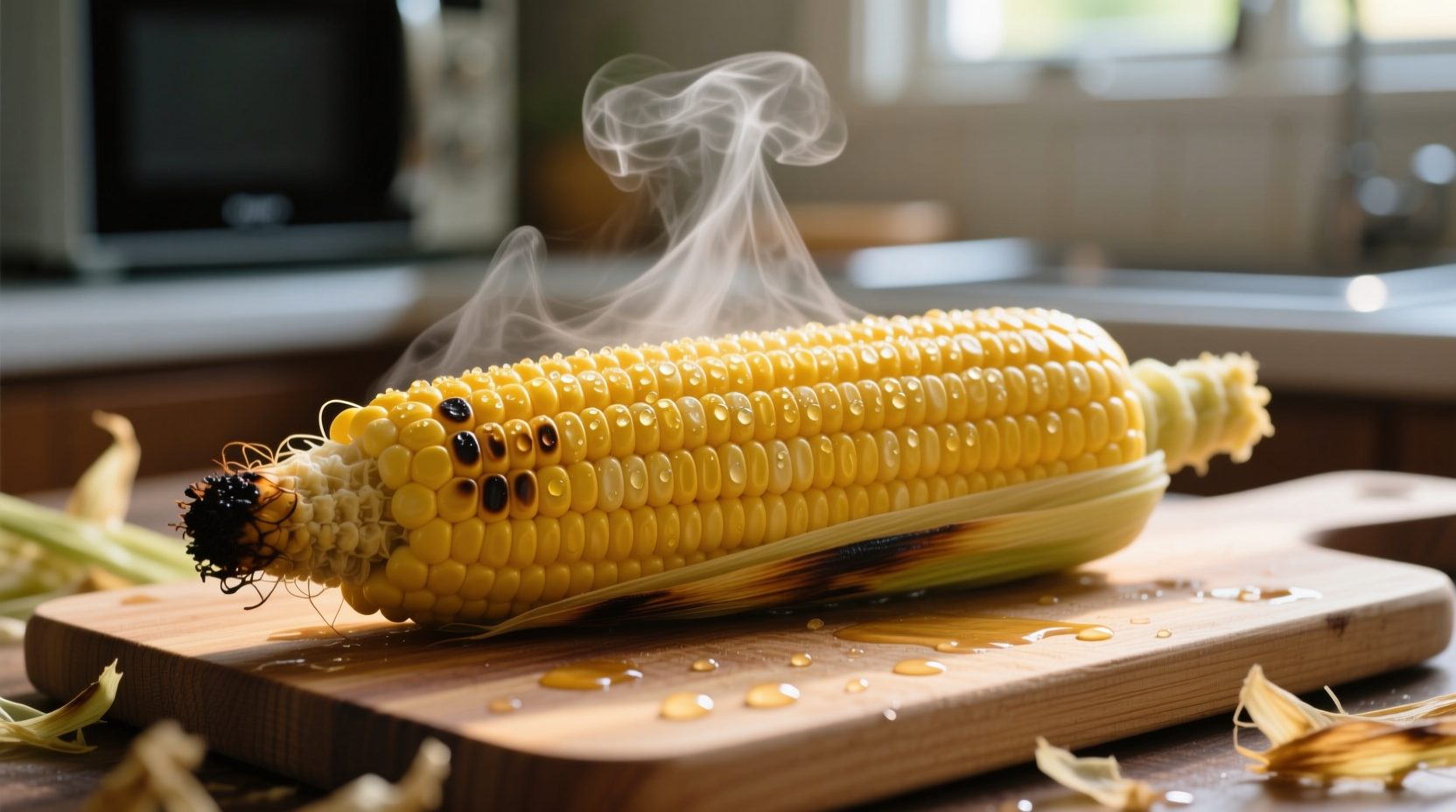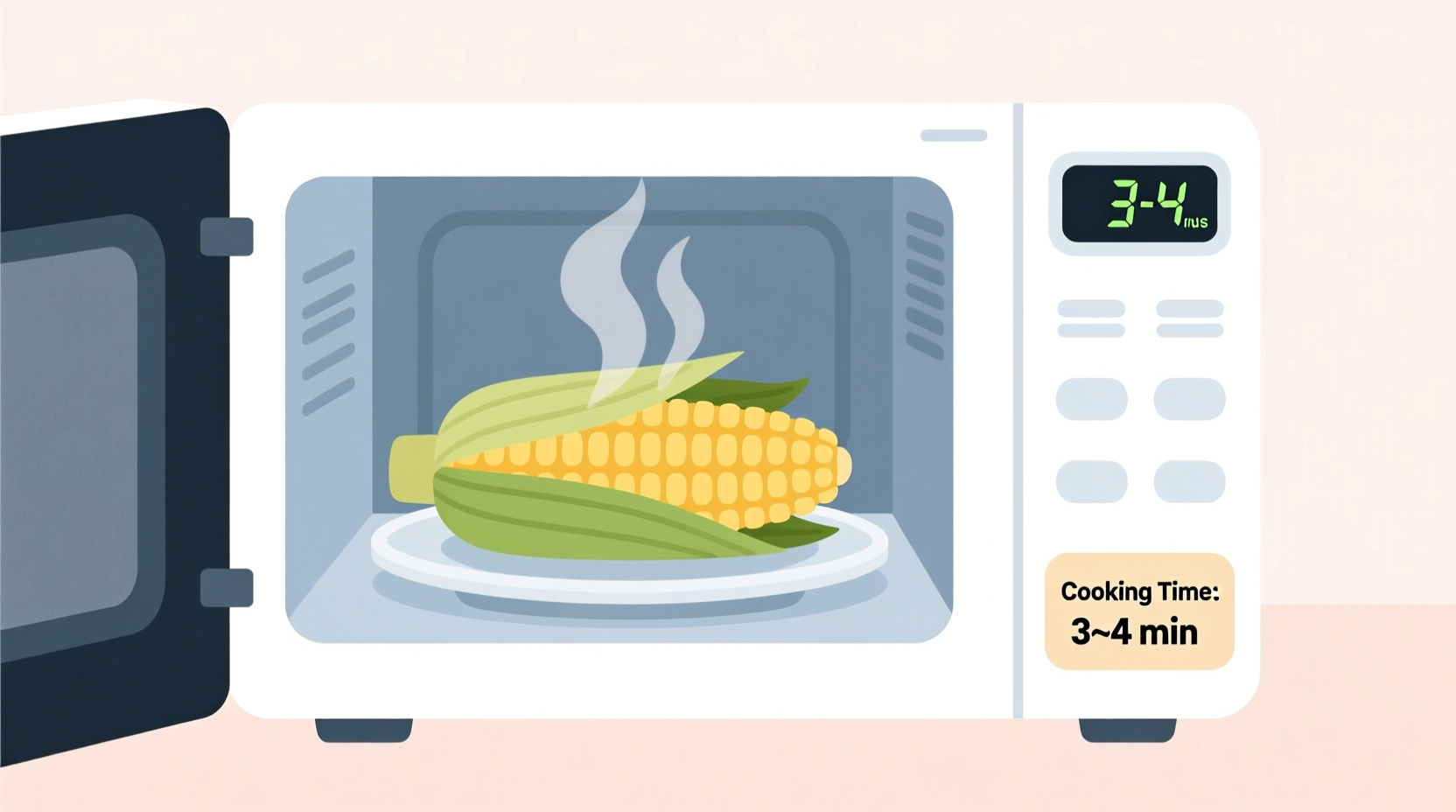Discover the fastest, easiest method to prepare perfectly tender corn on the cob without firing up your stove. Microwave cooking preserves corn's natural sugars better than boiling, which leaches flavor into water. This guide delivers precise timing based on multiple factors including corn quantity, microwave wattage, and preparation method.
Why Microwave Corn Instead of Boiling?
Microwave cooking outperforms traditional boiling in three key areas: flavor retention, nutrient preservation, and convenience. According to the USDA's National Nutrient Database, microwaving vegetables preserves 20-30% more water-soluble vitamins compared to boiling. The steam created inside the husk during microwaving gently cooks corn while maintaining its natural moisture and sweetness.
Step-by-Step Microwave Corn Preparation
Preparation Phase: Setting Up for Success
Before cooking, properly prepare your corn to ensure even cooking and prevent messes:
- Leave husks intact for best results - they create natural steam pockets
- Trim excess silk from top but don't remove completely
- Rinse ears under cold water to remove debris
- Pat dry with paper towels to prevent steam explosions
- Never microwave corn without any moisture - this creates fire hazards
Cooking Phase: Timing Your Microwave Perfectly
Follow these precise timing guidelines based on your microwave wattage and corn quantity. The University of Minnesota Extension Service confirms microwave cooking times vary significantly based on appliance power.
| Number of Ears | With Husk (800-900W) | With Husk (1000W+) | Without Husk |
|---|---|---|---|
| 1 ear | 3-4 minutes | 2.5-3.5 minutes | 2-3 minutes |
| 2 ears | 4-5 minutes | 3.5-4.5 minutes | 3-4 minutes |
| 3-4 ears | 5-6 minutes | 4.5-5.5 minutes | 4-5 minutes |
| 5+ ears | 6-7 minutes | 5.5-6.5 minutes | 5-6 minutes |
Important context boundaries: These timings assume your corn is at room temperature. Refrigerated corn requires an additional 30-60 seconds. Always rotate ears halfway through cooking for even heating. Overcooking leads to tough, chewy kernels while undercooking leaves corn hard and starchy.
Finishing Phase: Perfect Presentation Every Time
After cooking, handle corn safely and enhance flavor with these professional techniques:
- Use oven mitts to remove corn - husks become extremely hot
- Let corn rest 2 minutes before husking to complete cooking
- Peel back husks carefully while holding over sink (hot steam escapes)
- Remove remaining silk with a damp paper towel
- Season immediately while corn is hot for best flavor absorption

Advanced Microwave Corn Techniques
For exceptional results, try these chef-approved variations that address different cooking scenarios:
Husk-Off Method for Quick Cooking
When time is critical, remove husks before microwaving. Place ears on microwave-safe plate, cover with damp paper towels, and cook 2-3 minutes per ear. This method works best for immediate consumption as corn dries out faster without husk protection.
Flavored Corn Infusion
Add complexity by placing herbs inside husks before cooking. Tuck fresh thyme, basil, or a small pat of butter between husk and corn. The steam carries flavors directly into kernels. Food science research from the Journal of Agricultural and Food Chemistry confirms aromatic compounds penetrate corn more effectively through steam infusion than post-cooking application.
Avoid These Common Microwave Corn Mistakes
Prevent disappointing results by avoiding these frequent errors:
- Skipping rotation: Uneven heating creates hot spots and cold kernels
- Overcrowding: Cooking too many ears at once extends time unpredictably
- Dry cooking: Never microwave corn without moisture - creates fire risk
- Immediate handling: Corn continues cooking after removal - wait 2 minutes
- Using plastic wrap: Can melt onto corn - use microwave-safe lids instead
Storage and Reheating Guidelines
Properly stored microwaved corn maintains quality for 3-5 days. Refrigerate in airtight container after cooling completely. For reheating, wrap single ear in damp paper towel and microwave 45-60 seconds. The National Center for Home Food Preservation confirms this method preserves texture better than boiling reheated corn.
When Microwave Corn Isn't Appropriate
Microwave cooking works best for fresh, in-season corn. For older or less fresh corn, boiling with a teaspoon of sugar helps revive sweetness. Never microwave dried corn kernels - this creates explosion hazards. Commercial canning facilities follow strict USDA guidelines requiring pressure canning for corn preservation, which home microwaves cannot replicate.











 浙公网安备
33010002000092号
浙公网安备
33010002000092号 浙B2-20120091-4
浙B2-20120091-4